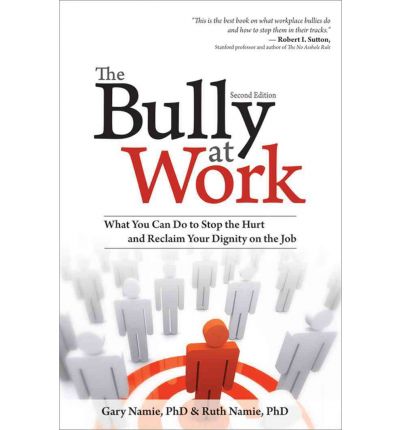Hello dear readers, I’ve collect some of my recent contributions to the dialogue about workplace bullying and related topics. I’m including several that I wrote about in earlier posts in case you missed them.
Article excerpted in popular law school casebook
I’m happy to share that my first law review article about workplace bullying and U.S. employment law, “The Phenomenon of ‘Workplace Bullying’ and the Need for Status-Blind Hostile Work Environment Protection” (Georgetown Law Journal, 2000), has been excerpted in the new edition of a leading employment law casebook used in law schools, Mark Rothstein, Lance Liebman, Kimberly A. Yuracko, Charlotte Garden & Susan E. Cancelosi, Employment Law, Cases and Materials (10th ed., 2024).
In U.S. law school courses covering specific areas of law, casebooks usually comprise the main reading assignments. A typical casebook is a mix of edited judicial decisions, statutes, and regulations, often framed by the editors’ own commentaries and excerpts from legal treatises and law review articles.
This excerpt (see photo above) is part of a modest milestone of sorts. You see, the Rothstein casebook is, by my estimation, the first to include a standalone subsection on workplace bullying. Whereas major U.S. textbooks in fields such as organizational psychology and organizational behavior have included coverage of workplace bullying for some time, those in the legal field have lagged behind — in part because of the resistance of American legal jurisdictions to enact express protections against workplace bullying.
This means that law students assigned the Rothstein casebook will likely be introduced to the topic of workplace bullying, even as advocacy efforts to enact the workplace anti-bullying laws such as the Healthy Workplace Bill continue.
Although the Rothstein casebook is not freely accessible online, you may download a pdf of my 2000 Georgetown Law Journal article without charge here.
Call for amending OSH Act to include risks of serious psychological harm at work
Last fall, my essay “Expanding Coverage of the U.S. Occupational Safety and Health Act to Protect Workers from Severe Psychological Harm” (freely downloadable pdf here) was published in the Suffolk University Law Review. I used the opportunity to propose that we have a serious conversation about expanding the U.S. Occupational Safety and Health Act (OSH Act) to cover workers from workplace hazards that are causing or likely to cause serious psychological harm. Here’s the abstract:
The U.S. Occupational Safety and Health Act of 1970 (OSH Act) was designed to safeguard workers from hazardous working conditions that can cause serious physical harm and death. Since becoming law, the ongoing toll of physical injuries and fatalities at work reminds us of the compelling need for the OSH Act and its many state equivalents to protect workers. In addition, various research and public education initiatives are now spotlighting workplace hazards that severely threaten the psychological health of today’s employees. Toxic work environments generally, the extraordinary workplace stressors prompted by the COVID pandemic, and workplace bullying and abuse, among other concerns, have underscored the human costs of trauma, fear, anxiety, and stress.
Against this backdrop, this essay encourages a needed conversation about extending the regulatory reach of the OSH Act to cover severe psychological harms at work and to anticipate the impact of added enforcement responsibilities on the federal Occupational Safety and Health Administration. Most significantly, it will examine two potential policy responses: First, applying the current OSH Act to workplace bullying, pursuant to a theory first advanced by Professor Susan Harthill; and second, amending the OSH Act to expressly cover workplace hazards that may cause severe psychological harm.
Four basic postulates about women and workplace bullying
Recently my law review essay, “Four Basic Postulates Concerning Women and Workplace Bullying in the United States” (freely downloadable pdf here), was published in the FIU Law Review (2023), based at the Florida International University College of Law. It appeared as a collection of invited responses to FIU law professor Kerri Lynn Stone’s excellent book, Panes of the Glass Ceiling: The Unspoken Beliefs Behind the Law’s Failure to Help Women Achieve Professional Parity (2022).
I wrote the essay to propose and expound upon four basic postulates concerning women and bullying in the American workplace:
- First, “women are likely to be disproportionately targeted for workplace bullying, a reality that carries multifaceted implications.”
- Second, “men are disproportionately the perpetrators of workplace bullying, another reality that carries important significance for understanding relational workplace mistreatment.”
- Third, “complicated dynamics are in play when women are alleged perpetrators of workplace bullying.”
- Fourth, “the enactment of workplace anti-bullying laws can help to fill some of the legal gaps confronted by women who face both bullying and discriminatory harassment at work.”
Podcast episode about HR and workplace bullying
Last fall, Dr. Gary Namie (founder, Workplace Bullying Institute) and I jointly appeared on a podcast episode, “Wiping Out Workplace Bullying,” as part of HRMorning‘s “Voices of HR” series. The series is hosted by Berta Aldrich, a high-ranking senior executive turned author, executive trainer, and coach who engaged us in a very lively conversation.
The episode runs for almost an hour, but for those interested in a more pro-active role for HR in addressing workplace bullying, I think it is useful. Here are the links:
- Apple podcasts (audio), click here.
- Spotify (audio), click here.
- YouTube (video), click here.
Podcast episode about personality characteristics associated with bullying
Earlier this week, I was interviewed about bullying generally, and workplace bullying specifically, by the Breakfast Show of the Voices of Islam podcast, based in London. Most of the questions surrounded personality traits associated with bullying and bullies, which gave me an opportunity to discuss how both qualities of empathy and Adverse Childhood Experiences can elevate the risks of someone becoming a bully or a target.
You may access the podcast episode from SoundCloud click here without charge (free registration necessary). My segment starts at the 1:28 mark (1 hour, 28 minutes) and runs for about 12 minutes.











